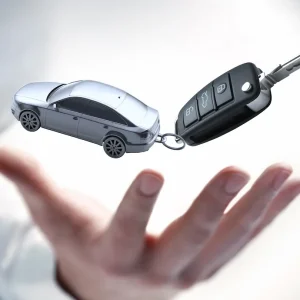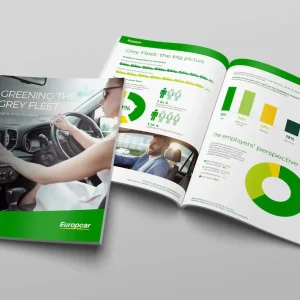The UK has already made significant strides in the transition to electric vehicles (EVs). The government’s 2030 ban on new petrol and diesel vehicles, coupled with many companies setting their own internal net-zero deadlines, has ramped up the pressure for businesses to switch to more eco-friendly practices. Mobility plays a significant part in reducing a business’ carbon footprint, and hence the responsibility often falls to fleet managers to champion this within their organisations.
Making EVs an option for employees has seen promising uptake. At Alphabet, we’re seeing growing confidence for both pure electric and plug-in hybrid electric new car orders, which have overtaken petrol vehicle orders year-to-date; at 36% and 30% respectively. Petrol cars currently make up just 25% of new business. However, the switch has mostly appealed to the ‘early adopters’ so far – those with journeys and local infrastructure that are EV-friendly. Implementing workplace charging has also been a huge help for driving adoption, but fleet managers continue to face challenges with encouraging a wider push towards fully electrifying their fleets. Tackling the root cause of these issues with employees, the wider business, and the overall challenges the industry is facing will be crucial in pushing full fleet electrification further and driving progress on the road to net-zero.
Addressing employee needs
Making the switch is not a one-size-fits-all approach, as every fleet is made up of a diverse group of people with different needs. Some managers have noticed that employees are reluctant to make the switch from the comfort of ICE vehicles, as these are typically better understood compared to EV alternatives. Tackling this requires effective comms and myth busting around common misconceptions. Additionally, ensuring a smooth transition for these drivers relies on enabling the best processes possible. Gathering feedback from drivers who have already made the switch would be a great place to start to support the next wave of EV adopters within their organisations.
Another challenge that fleet managers are facing is how to allocate types of low-emission vehicles. To approach this, having the right insights to investigate factors that can impact EV adoption among drivers is crucial. This can help to bucket employees using simple categories like assessing staff’s local access to charging and the costs of charging, or breaking down their trip patterns into business, commuting, and private mileage. Vehicle allocation policies can then be created using these groups by targeting faster charging vehicles to employees who drive frequently and tend to charge away from home. Where more sophisticated data, like telematics, is not available, this information can be attained through simple driver surveys, supported by data from fuel cards or expenses.
Addressing the business needs
It is without doubt that businesses are also feeling the effects of the current economic climate with every expense having to be rationalised and closely monitored. Best practices for promoting EV investment within the business starts with analysing vehicles in terms of their Total Cost of Ownership (TCO). This ensures every element of cost is identified and considered in modelling.
With long-term strategy in mind, it is important that fleet managers take the Whole Life Cost (WLC) of an EV into consideration when making the switch. Costs of purchasing or running monthly rentals is only one small piece of this puzzle. For example, the business mileage cost of a driver charging at home will be significantly different to one who charges via public infrastructure. Factoring in these components and effectively modelling WLC will often show that EVs can be a cheaper alternative to ICE vehicles, and a preferable investment.
It is also vital that fleet managers address how costs may fluctuate in future. For example, how the costs of an EV will change when they are no longer exempt from vehicle excise duty (VED) in 2025, and how fuel prices beyond the fuel duty freeze will change. Though the Chancellor extended the freeze for another 12 months in the Spring Budget this year, powering EVs will offer a cheaper option in the long term when factoring in the expected settling of energy pricing in the months ahead.
The expansion of town and city charging zones will also impact future costs. For instance, the expansion of the ultra-low emission zone (ULEZ) across all London boroughs to be implemented in August this year means older, more polluting ICE vehicles will be charged higher fees compared to low-emission vehicles. Charges will also apply to clean air zones in areas like Bath, Birmingham, Portsmouth, Bristol, and Bradford.
Mediating the effects of issues with the supply chain
Fleet managers have faced extraordinary challenges with supply chains in recent years, which has led to longer lead times. While these issues are being addressed and we are seeing some easing, it’s likely that this will continue well into 2023. However, this should not be seen as a barrier to progress – this is not the first time the sector has faced challenges with supply and demand, and it certainly won’t be the last.
Minimising impacts to these issues has led to a need for greater flexibility across fleet management. Being able to do this requires the support of leasing experts who can provide the most up-to-date information on the supply chain and any delays that may arise. These providers can also offer support to assess flexing their vehicle choice policies by re-examining new models and grade listings.
Accounting for these issues also means planning for delays. Fleet managers should work to get orders in early to account for longer-than-usual wait times, and also factor this into future planning. This will help to reduce contract extensions needed to fill the wait times, and the risk of downtime for aged vehicles. Should vehicles need to be on the road for longer than expected due to longer lead times, ensuring that these vehicles are in the best condition for as long as possible will make a significant difference. This can be done through enforcing proactive maintenance schemes to maintain high levels of uptime, limit high service costs, and even swap vehicles between drivers to control the number of high mileage vehicles in a fleet.
With fleet managers aiming to electrify more of their fleets following pressure from internal and government-implemented deadlines, these leaders must look towards fully electrifying their fleets to continue to pursue net-zero ambitions. This requires tackling the common challenges faced both inside the business and within the industry, which can be daunting at first, but it is crucial that fleet managers across the UK are not deterred from full electrification as a result.
Caroline Sandall-Mansergh is consultancy and channels development manager for Alphabet GB





